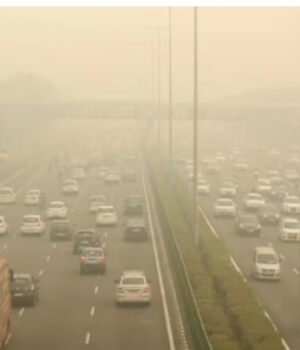The air quality in India’s capital city, Delhi, has taken a distressing turn as it registers a hazardous Air Quality Index (AQI) of 616. The surge in pollution levels is primarily attributed to the adverse combination of low wind speed and the persistent issue of stubble burning in the neighboring state of Punjab. These factors have collectively contributed to the alarming deterioration in air quality, especially in areas like Mundka, where the AQI reached an alarming 616.
The entire National Capital Region (NCR) has been shrouded in maroon flags, symbolizing the perilous ‘hazardous’ air quality that is posing serious health risks to the residents. Low wind speed, which inhibits the dispersion of pollutants, coupled with the annual problem of crop residue burning in Punjab, has exacerbated the situation, leading to this alarming spike in pollution levels.
As of Wednesday, Delhi experienced its fifth consecutive day of ‘very poor’ air quality, with the maximum temperature recorded at 32.3 degrees Celsius. The city’s overall AQI, as reported by the Central Pollution Control Board, stood at 357 at 7 pm, underscoring the persistence of severe air pollution.
The gravity of the air quality crisis has prompted the Delhi High Court to address the issue, emphasizing the role of the forest department in improving the city’s AQI. Justice Jasmeet Singh, during discussions regarding the creation of an alternative forest in Delhi and the need to fill department vacancies, pointed out the dire consequences of polluted air on the health of the city’s residents. Children, in particular, have been suffering from respiratory issues like asthma due to prolonged exposure to deteriorating air quality.
The situation calls for immediate and effective measures to mitigate the impact of stubble burning, reduce pollution levels, and safeguard the well-being of Delhi’s inhabitants. As air quality continues to deteriorate, the urgency of addressing this crisis becomes increasingly apparent, demanding concerted efforts and cooperation from all stakeholders.










